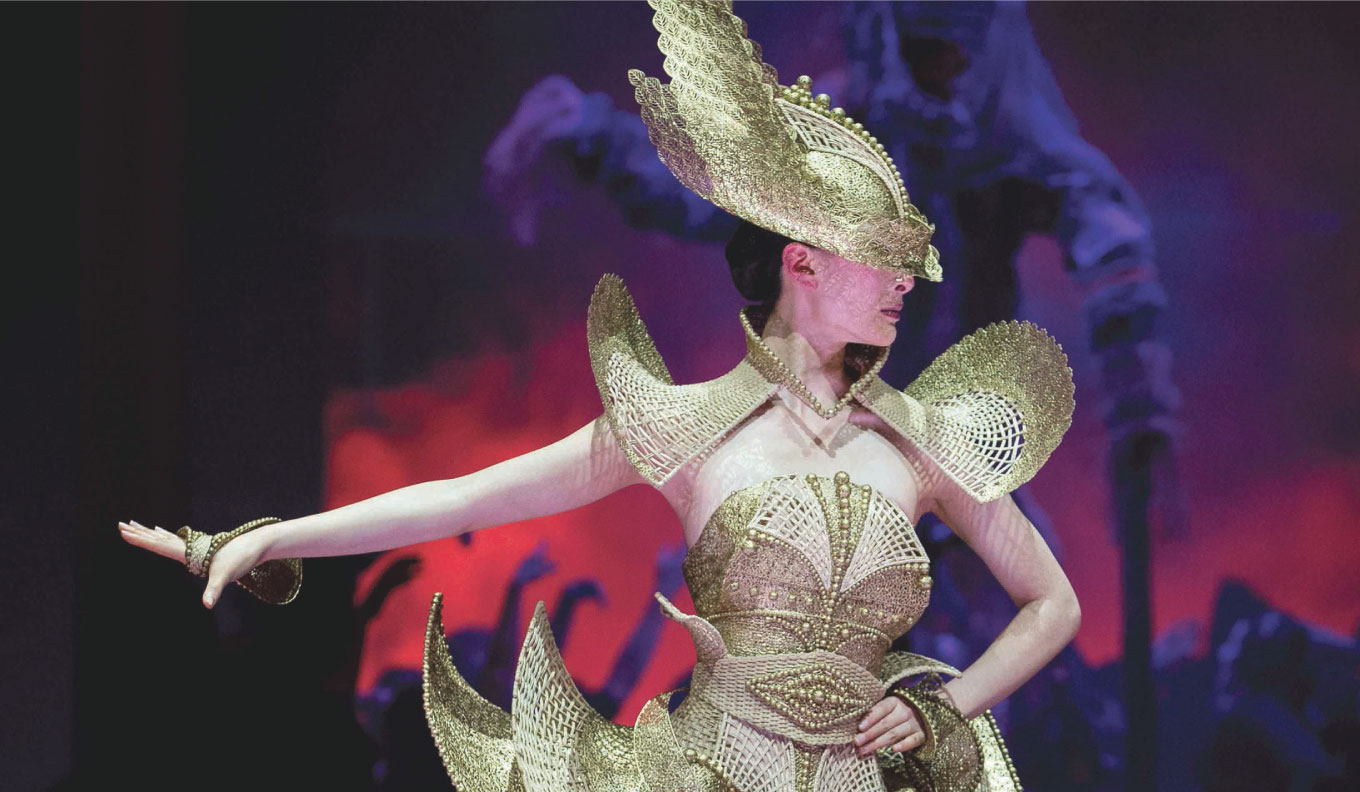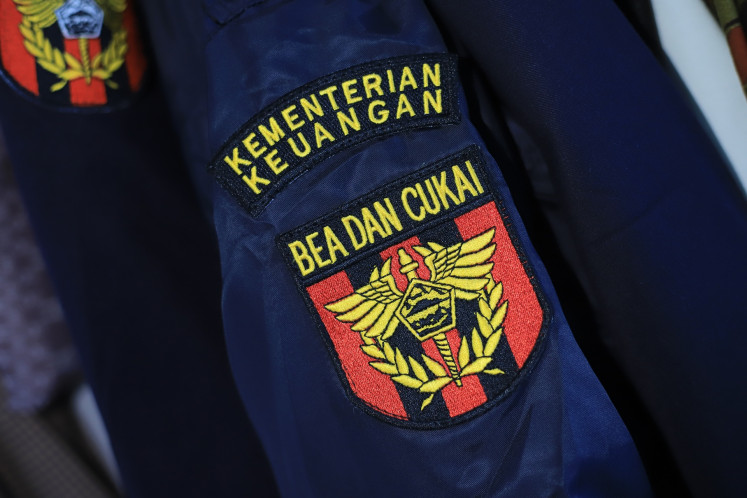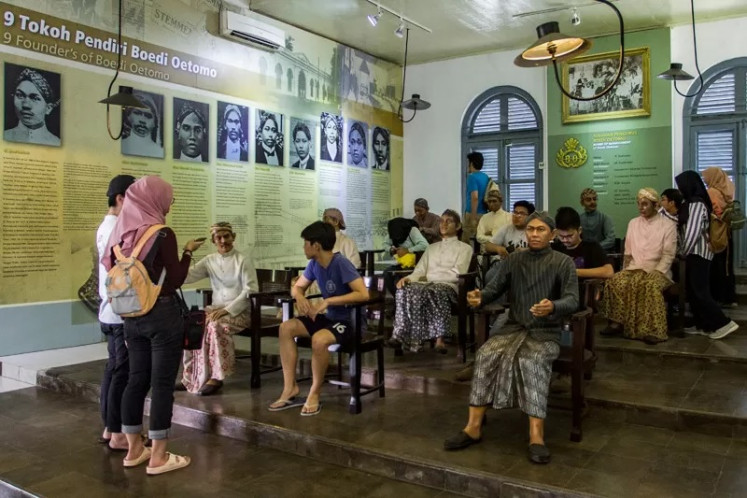The loves and hates of Anang Asmara
Javanese Dancers II by Anang Asmara (Courtesy of Anang Asmara) Painters who specialize in portraits know the expressive power of a face
Change text size
Gift Premium Articles
to Anyone

Javanese Dancers II by Anang Asmara (Courtesy of Anang Asmara)
Painters who specialize in portraits know the expressive power of a face.
Faces can convey so much - not just a likeness, but also personality and mood. They can flatter or romanticize; they can exaggerate a particular trait or quality or they can conceal it.
In fact, one of the most famous portraits ever painted is Leonardo da Vinci's Mona Lisa, which remains mysterious even now. Who was she, exactly? What is hidden behind her famously enigmatic smile?
A few years ago, I came across a painter in Indonesia who, like da Vinci, also paints mysterious women. Unlike da Vinci, however, he finds the best way to express their identities is precisely by not revealing their faces - and often not even their heads! Amazingly, this approach works brilliantly.
His name is Anang Asmara (Asmara meaning "love"), a 35-year-old painter from Sleman regency near Yogyakarta. I was struck not just by his style and astounding ability to reproduce detail and texture, but also by the strong symbolism of his paintings.
This stems in part from Anang's admiration and respect for traditional culture (and especially the Javanese traditions into which he was born), but it is influenced also by his admiration and respect for women, whom he feels often get a very raw deal in contemporary Indonesia.
His works thus have a decidedly feminist thrust about them and this double-pronged ideological stance sometimes seems almost like a contradiction. Anang manages to reconcile the two in a remarkably integrated way, however, because he sees certain aspects of modern Javanese life as debasing both modern women and the Javanese traditions he loves.
And through all this, Anang's criticisms of the patriarchy inherent in both modernity and traditionalism are loud and clear. He objects equally to traditional views of women as subordinate konco wingking (literally, "friend at the back", here meaning "appendage to men") and to the modern capitalist abuses that make women vehicles for profit and sexual exploitation.
In The Remnants of Feudalism, for example, his disapproval of Javanese patriarchy is obvious. The painting shows the back of a man dressed in traditional aristocratic Javanese garb: Batik cloth and a striped woven surjan jacket.
His hands are akimbo, and a kris is nestled in the crook of his arm. He is looking down at two peasant women, dressed in creased kebaya with flower patterns and batik in traditional motifs in sogan brown, most likely cheap print versions and not the handmade batik reserved for the moneyed.
The positions of the man and the two women clearly show their hierarchical relationship. A pair of the black slippers typically worn by aristocratic Javanese men can be seen in the bottom right corner, together with the hard, round cap once worn by Dutch colonial plantation overseers.
These are symbols that speak of a feudal and asymmetrical, repressive relationship not just between men and women, but also between foreign forces (e.g., capital, technology) and national assets.
About Women, * III shows the feet and sarongs of three women standing on top of a newspaper that hovers above the ground like a magic carpet.
The newspaper is a sleazy tabloid, replete with news of sex scandals and debauchery, women abused by their polygamous husbands or other men, and racy ads for call girls who are guaranteed to satisfy your (male) lust. Below the flying newspaper lies a red, flowery bra, as if carelessly thrown to the floor, and a long-stemmed red flower, its head upside-down.
These two objects obviously symbolize the degraded, fallen woman, exploited by both traditional culture and modern capitalism, and struggling to survive.
But other paintings speak equally clearly of Anang's admiration and love of traditional Javanese culture, and of those who uphold and cherish it. The Symphony of the Soul's Rhythm shows a man sitting crossed-legged, thumping away at a set of red-painted drums.
He wears a flowery jacket (yes, men do that in Yogya!), a traditional indigo batik, a pink tie-dyed sash and black leather belt with a kris slipped through at the back.
Naturally, he also wears a blangkon (a traditional Javanese headdress made from batik), sporting the bulge at the back that originally contained the man's hair tied in a bun to symbolize manly capabilities (perhaps men should start wearing their hair long again - the true, benevolent patriarchy seems to have been emasculated long ago.)

Likewise, in People who Love their Own Culture, a male gamelan player is seen sitting crossed-legged with two women sinden (singers) sitting in the traditional way for females, legs tucked underneath.
The soles of the feet confront the viewer, a contravention of the strict tradition against showing the soles of your feet to others. Is this Anang's rebellion on display?
If so, it's also a display of his belief in the possibility of an equal relationship between men and women, living in harmony like the music of the sinden singer and the gamelan player.
So, find time if you can to view the works of this remarkable and talented young painter who is motivated as much to eliminate the oppressive aspects of his culture as he is to preserve the best of it.
After all, isn't it only when you truly love your culture that you care enough to criticize it?
Decorate the Era
By Anang Asmara
Until July 3
Yogya Gallery
Jl. Pekapalan No. 7
Alun Alun Utara, Yogyakarta









